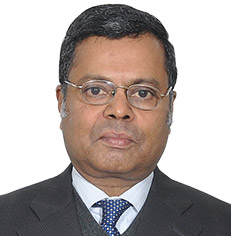Chinese companies have shown significant interest to invest in the special economic zones (SEZs) in India in a wide range of sectors. Memorandums of Understanding (MoUs) have been signed between Indian state government agencies and Chinese investors such as Beiqi Foton Motors for setting up an auto industrial park in Pune, Maharashtra; China Development Bank Corporation (CDB) and China Small and Medium Enterprises (Chengdu) Investment Limited (CSME) for setting up a multi-purpose Chinese industrial park in Gujarat; Dalian Wanda Group and China Fortune Land Development (CFLD) Co. Ltd. for development of an integrated entertainment park-cum-industrial township and industrial park in Haryana.
The special economic zones (SEZs) in India are offering attractive incentives to foreign investors. SEZs are governed under the following pieces of legislation: Special Economic Zone Act, 2005 (SEZ Act); and Special Economic Zone Rules, February 2006 (under the SEZ Act).

Managing Partner
Singhania & Partners
An SEZ may be established under the SEZ Act, 2005, by the central or state government of India either individually or jointly with an individual or by an individual, whether resident in India or outside India, or by any other person including a company whether resident in India or outside India.
The government of India, through the SEZ policy, has made available various incentives, exemptions, concessions and privileges (IECP) to the SEZ “developers” and the SEZ “units” to enable global competitiveness.
Following are the incentives and facilities offered for development in SEZ as per the SEZ Act.
100% foreign direct investment under the automatic route is allowed as per the present guidelines of the SEZ Act. Exceptions include arms and ammunition, explosive, atomic substance, narcotics and hazardous chemicals, distillation, brewing of alcoholic drinks, cigarettes, cigars and manufactured tobacco substitutes. Also, there is no cap on foreign investments for small scale reserved items.
External commercial borrowings (ECB). ECB is allowed up to US$500 million a year without restriction. For developers of an SEZ, the ECB channel may be availed after receiving government approval, and only for providing infrastructure facilities in the zone. However, ECB will not be permissible for development of integrated township and commercial real estate within the SEZ.
With the permission, companies can manufacture products directly, as long as the goods you are producing fall within a sector that allows 100 percent FDI.

Senior Partner
Singhania & Partners
Procurement of goods for development, operation and maintenance of an SEZ unit. SEZ units may import or procure from the domestic sources, duty free, the following items for implementation of their project in the zone without any licence or specific approval: capital goods, raw materials, consumables, spares, packing materials, office equipment, diesel generator sets, etc. Goods imported/procured locally duty free could be utilized over the approval period of five years.
Income tax exemption. There is a 100% income tax exemption on export income for SEZ units under Section 10AA of the Income Tax Act for first five years, 50% for next five years thereafter and 50% of the ploughed back export profit for next five years (any assessment year commences on or after 1 April 2006, but before 1 April 2021).
Sale of manufactured products to the Domestic Tariff Area (DTA). The SEZ is primarily set up for exports of goods. However, the current policy permits an SEZ unit to sell in the domestic market (i.e., DTA) its produced goods of a value which is up to 50% of the value of the goods exported by the same unit. The other condition which goes along with the 50% value is that the net foreign exchange after the sale in DTA should be positive. With the introduction of the Goods and Service Tax Act (GST Act), 2017, such sale is subject to integrated goods and services tax (IGST).
Sale of assets of the SEZ upon closure or exit from the SEZ. An SEZ unit can transfer its assets to other bonded units such as an export oriented unit (EOU), electronic hardware technology park (HTP), scheme or software technology park (STP) or biotechnology park (BTP), with the prior approval of the authority, without paying custom duty, taxes or any other levies.
An SEZ unit can transfer its assets to a non-bonded unit (i.e., DTA), with the prior approval of the authority, by paying the required custom duty, taxes or any other levies such as IGST.
Other advantages. In addition to the above, SEZ units and developers can also enjoy single window clearance for central and state level approvals, and exemption from GST on their import of good and services.
ADMINISTRATIVE SETUP OF SEZS
An SEZ developer submits the proposal for the establishment of the SEZ to the concerned state government. The state government forwards the proposal with its recommendation within 45 days from the date of receipt of such a proposal to the Board of Approval (BoA), which is the apex body, comprising 19 members from different government departments. The applicant also has the option to submit the proposal directly to the BoA.
The BoA has been constituted by the central government in exercise of the powers conferred under the SEZ Act.
The amount of land that your proposal requires will determine what type of SEZ it will be. The different types of SEZ that can be developed are:
(1) a multi-sector SEZ that requires a minimum of 1,000 hectares of land; (2) a sector-specific SEZ that requires a minimum of 100 hectares of land; (3) a free trade and warehousing zone (FTWZ) that requires a minimum of 40 hectares of land; and (4) an IT/ITeS/handicrafts/bio-technology/non-conventional energy/gems and jewellery SEZ that requires a minimum of 10 hectares of land.
The benefits available under the SEZ policy essentially translate into reduced costs for infrastructure, utilities, raw material, capital, manpower and operational ease.
Ravi Singhania is the managing partner and Dipak Rao is a senior partner at Singhania & Partners
P-24 Green Park Extension
New Delhi 110016, India
电话 Tel: +91 11 4747 1414
电子邮箱 E-mail:
ravi@singhania.in
dipak@singhania.in
www.singhania.cn






















